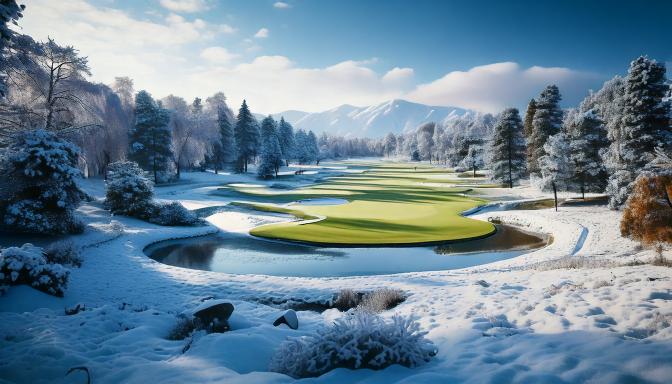
If you can brave the cold, playing golf in the snow can be fun and adventurous.
However, it can also have a significant detrimental impact on the turf.
Left untouched, there are some benefits to a blanket of snow on grass, including insulation against extreme temperatures. But walking/playing on it can cause damage that will almost certainly set your course back when warmer weather returns.
Here are a few reasons why it’s best to visit the driving range instead.
Snow compaction
Walking, pulling trolleys and driving golf carts over snow-covered grass compresses the snow into dense layers. This compaction reduces airflow and can lead to ice formation. Ice prevents the grass from breathing and receiving oxygen, which can suffocate grass roots.
Soil compaction
Underneath the snow, repeated pressure from foot traffic or equipment can compact the soil. Compacted soil inhibits root growth, reduces water infiltration, and limits nutrient availability, all of which can weaken the grass.
Freezing and thawing cycles
Playing golf on courses covered in snow – or even where snow has been cleared but temperatures are still very low – can cause repetitive freezing and thawing cycles.
This can disrupt root stability as the soil expands and contracts, weaken grass crowns (the part of the plant closest to the soil, which is vital for regrowth) and lead to frost damage, which makes the plant more vulnerable to disease.

Snow mold
Compacted snow creates the ideal conditions for snow mold, a fungal disease that thrives in the cold. The aforementioned compaction created a damp, poorly-ventilated environment where fungi can flourish.
General physical damage
Walking over snow-covered, frozen grass can break or crush the blades – and the same applies when the snow begins to melt. Damages blades are less effective at photosynthesising when the weather becomes more temperate, and this can drastically slow the recovery process.
Knock-on effects
Playing golf in these conditions not only has short-term effects, but will result in sub-standard playing surfaces when spring comes around. Indeed, there’s a good chance that high-traffic areas played in snow will appear thin and bare when temperate weather returns. This will cause extra work for your club’s greenkeepers and put a strain on resources.
In conclusion
There are myriad reasons why playing golf in snow is a bad idea, and it will cause headaches and extra work for greenkeepers across the land. If you need to scratch a golfing itch, our advice is to head to the range!